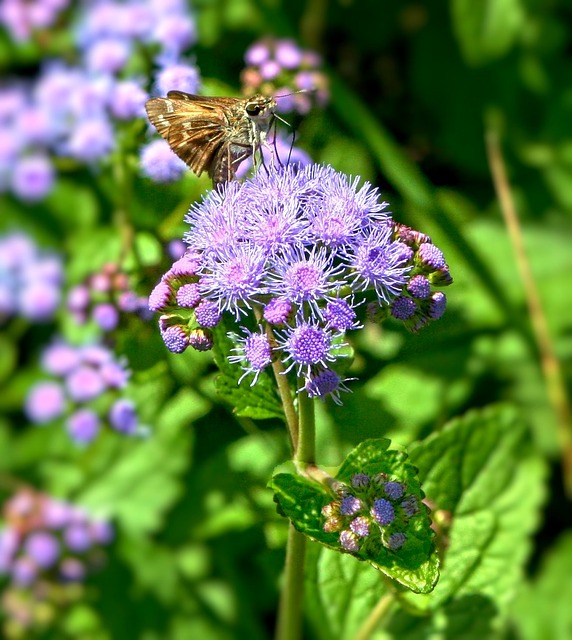Blue mistflower (Conoclinium coelestinum) is also known as hardy ageratum. This beautiful blue flowering native perennial is a prodigious bloomer with the staying power of eight weeks of flowers from late summer until frost. It is a valuable fall nectar source for butterflies and skippers, and other pollinators such as our native bees. The flower is in the composite family, but the flower head has only disk flowers and no ray flowers (petals). The flower can be blue, pink, purple, or white. Most sources say mistflower plants prefer moist, humusy soils that do not dry out in full sun to partial shade, although you can find a source that says they are drought resistant. I have it in both types of growing conditions, and it thrives in both. It never grows more than three feet tall and does well along ponds, in wildflower gardens, or naturalized areas. This is not a plant for a small space unless you are willing to maintain its size; it spreads by rhizomes and can double in size in a year. It is best to divide clumps in early spring, but you can divide it just about any time. If you find it too aggressive and moving into areas where you do not want it, dig it up and move it to another location or share it with a friend. Propagation by division is the easiest and quickest. Mistflower does produce viable seeds that require one-month cold stratification and need light to germinate. You can also take stem cuttings in June. Deer will munch on some flowers, but they do not eat all of them. For more information as well as suggested companion plants, see Conoclinium coelestinum (Blue Mistflower) (gardenia.net) If you enjoyed this post, please give us a thumbs up and feel free to share it.

